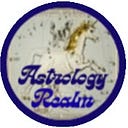**Lunar Devotion: Exploring Religions that Worship the Moon**
This article may include affiliate links, which means that if you click on one and decide to purchase something, I may receive a commission at no extra cost to you.
Throughout history and across various cultures, the Moon has held a significant place in religious practices and spiritual beliefs. Its luminous presence in the night sky has inspired awe and wonder, leading to the development of lunar-centric religious traditions. In this article, we explore some of the religions and spiritual paths that worship and revere the Moon as a divine symbol.
**1. ****Ancient Moon Deities:**
In many ancient civilizations, the Moon was personified as a deity, symbolizing various aspects of life and the cosmos. One of the most well-known lunar deities was the Egyptian goddess Isis, associated with motherhood, magic, and protection. In Mesopotamian mythology, the Moon god Sin was revered, embodying wisdom, divination, and the passage of time.
In Greek mythology, the goddess Selene was the personification of the Moon, representing the lunar cycles and the illumination of the night sky. In Roman mythology, the goddess Luna held a similar role as the divine embodiment of the Moon.
**2. ** **Wicca and Modern Paganism:**
Wicca and many modern Pagan traditions embrace a deep reverence for nature and celestial bodies, including the Moon. Within these spiritual paths, the Moon is often associated with the divine feminine, intuition, and cycles of transformation. The lunar phases play a central role in rituals and spellwork, with each phase holding unique energies that practitioners harness for various purposes.
Get Your Free Astrology Reading: http://1stHoroscope.com
( This is an affiliate link.)
**3. ** **Islamic Calendar and Crescent Moon:**
The Islamic calendar follows a lunar-based system, with months beginning at the sighting of the crescent Moon. The crescent Moon holds religious significance as it marks the start of important Islamic observances, such as the holy month of Ramadan and Eid al-Fitr, which follows the month of fasting. Islamic art and architecture also feature motifs of the crescent Moon, symbolizing divine guidance and the passage of time.
**4. ** **Hindu and Jain Traditions:**
In Hindu and Jain traditions, the Moon is associated with deities and cosmic cycles. In Hinduism, the Moon is linked to Chandra, the god of the Moon, who is depicted as a fair-skinned deity holding a crescent Moon. The Moon’s cycles are also integral to the Hindu calendar, determining auspicious times for various ceremonies and festivals.
In Jainism, the Moon is revered as a celestial body that influences life on Earth. Jain astronomers have studied the Moon’s movements and its impact on tides and natural phenomena.
**5. ** **Korean Shamanism and Moon Worship:**
Korean Shamanism, known as Muism or Sinism, includes Moon worship as an essential aspect of its practices. Moon deities are revered for their protective and healing attributes. Lunar rituals are performed during the full and new Moon phases, seeking blessings and guidance from the celestial energies.
**Conclusion:**
The Moon’s mystical allure has inspired religious practices and spiritual beliefs across diverse cultures and traditions. From ancient deities to modern spiritual paths, the Moon continues to hold a place of reverence and awe in the hearts of those who find solace and guidance in its luminous presence. Whether as a symbol of divine femininity, cycles of life, or cosmic forces, the Moon’s significance in religious contexts remains a captivating testament to its enduring role in shaping humanity’s spiritual journey through the ages.
LEGAL INFORMATION
Any links in this article,
may be affiliate links. Using my links is free at no extra cost
to you, and helps to support my channel. Information in
the articles is not business or investment advice, and
these articles are created primarily for entertainment purpose.
Thank you for your support!
